The double pivot is one of the most fascinating tactical setups in modern football. While it has existed in various forms for decades, its prominence in the tactical arsenal of top teams has surged in recent years. But what exactly is the double pivot, and why do so many coaches rely on it to dominate matches? In this article, we’ll break down the concept, its key roles, advantages, variations, challenges, and real-life applications, offering a comprehensive guide to this critical tactical feature.
What Is the Double Pivot?
At its core, the double pivot refers to a midfield pairing of two deeper-lying central midfielders who operate in tandem to provide defensive solidity, aid in build-up play, and offer a platform for transitions. The term “pivot” emphasizes their role as a fulcrum of the team, connecting the defensive and attacking phases of play.
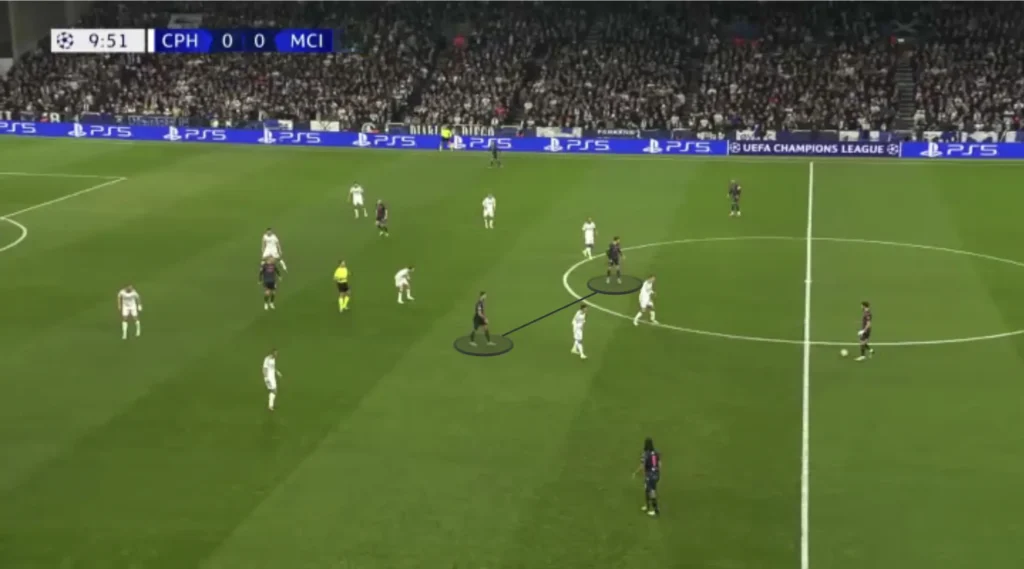
Typically deployed in formations like the 1-4-2-3-1, 1-4-4-2, or even some 1-3-4-3 systems, the double pivot contrasts with a single-pivot setup, where one player shoulders the responsibility of anchoring the midfield alone. The flexibility and dual-functionality of the double pivot have made it a go-to choice for managers seeking tactical balance.
Key Roles of the Double Pivot
The double pivot serves several vital purposes within a team’s tactical framework. Each role contributes to maintaining balance, enabling fluid transitions, and enhancing both defensive and offensive capabilities.
1. Defensive Shield:
The double pivot provides a robust defensive barrier in front of the backline. By having two players in this role, the team can better cover spaces, break up opposition counterattacks, and regain possession in midfield. This is particularly effective against teams that aim to exploit the central zones through advanced playmakers or strikers dropping deep.
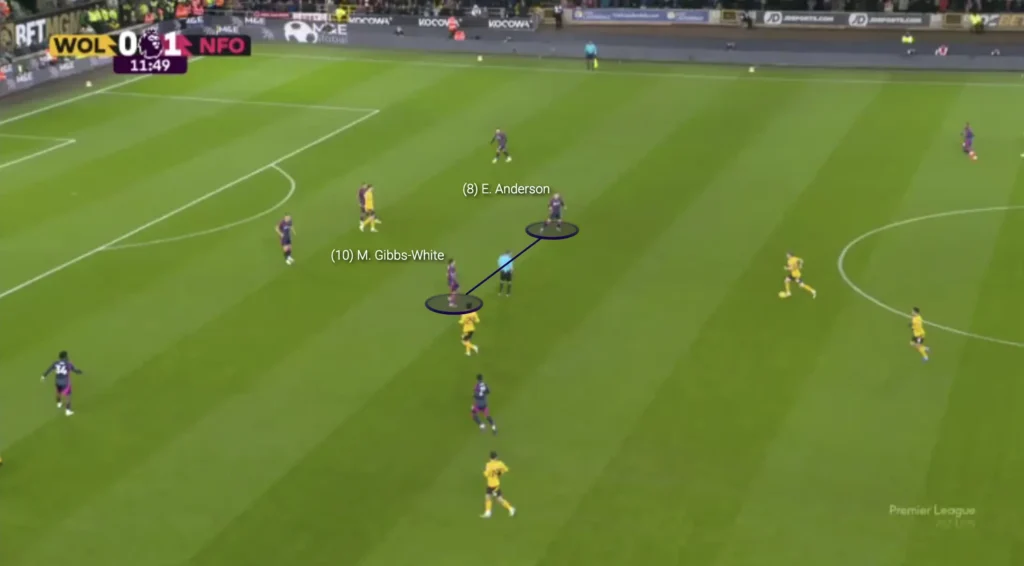
2. Build-Up Play:
These players are crucial during the first phase of possession. They drop deep to collect the ball from defenders, distribute it forward, and dictate the tempo of play. Their ability to circulate the ball efficiently, switch play to exploit spaces, and resist pressing from opponents is essential for breaking down compact defensive setups.
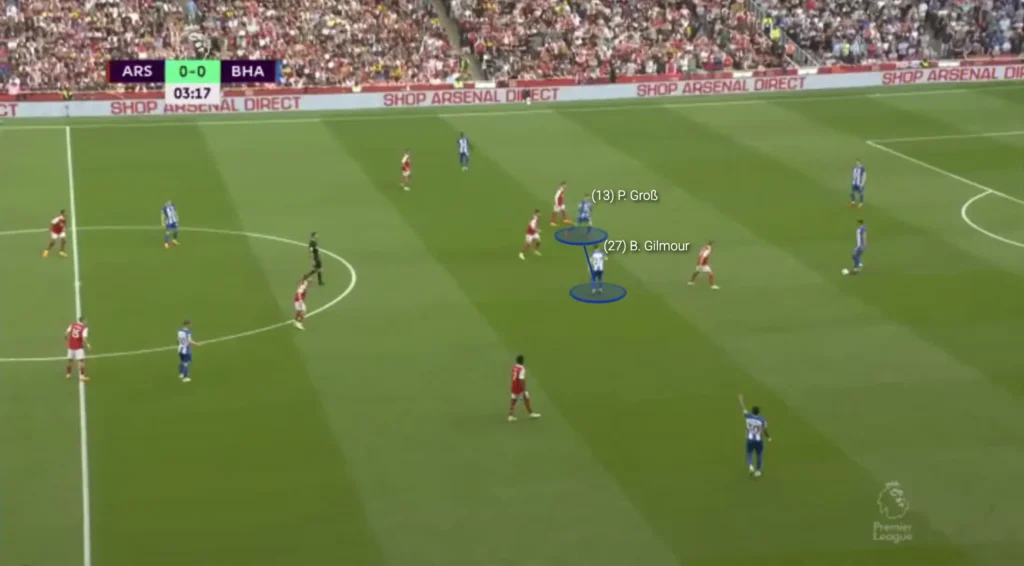
3. Flexibility in Positioning:
A hallmark of the double pivot is its fluidity. When one player steps forward to press, join the attack, or occupy a more advanced role, the other remains behind to maintain defensive balance. This dynamic positioning ensures the team retains its shape both offensively and defensively, minimizing vulnerabilities.
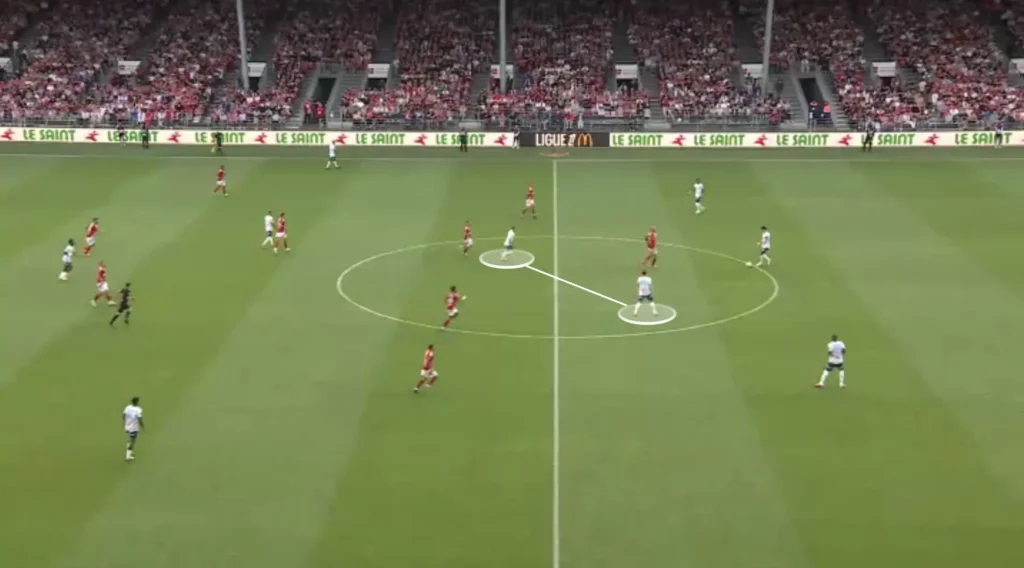
4. Support for Wide Play:
In formations where fullbacks are tasked with providing width in attack, the double pivot offers cover by sliding into wide areas if possession is lost. This ensures that the team doesn’t become overly exposed on the flanks.
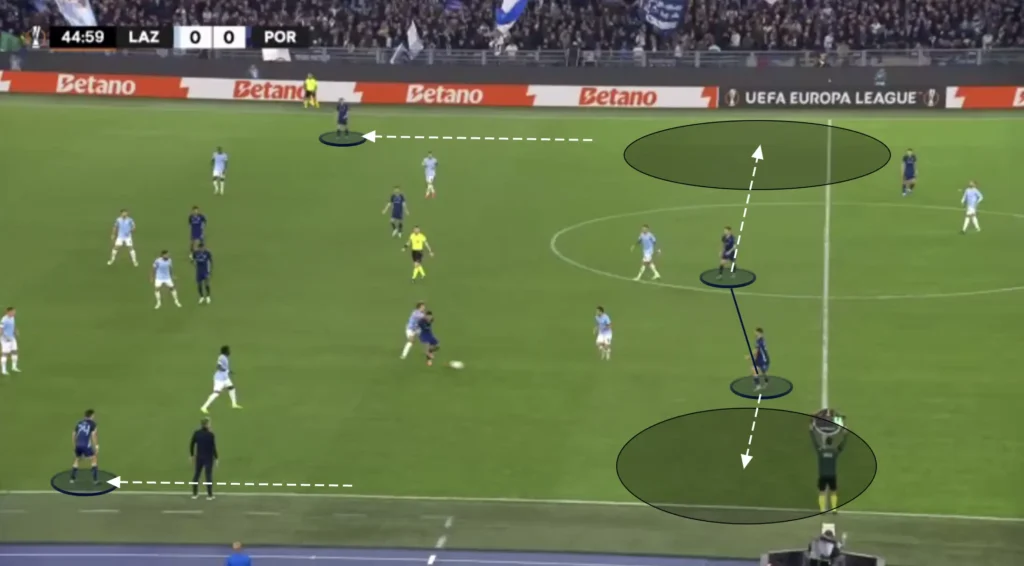
When to Use the Double Pivot
The double pivot is ideal for teams that prioritize balance and control. It works particularly well in the following scenarios:
- Against opponents with strong central attacking threats:
The additional defensive coverage helps neutralize advanced playmakers or forwards operating between the lines. - In systems that emphasize possession:
Teams that build from the back benefit from the extra passing options and stability provided by the double pivot. - During defensive phases in tough matches:
Deploying a double pivot can help teams withstand pressure and maintain compactness in midfield.
Variations of the Double Pivot
The roles within the double pivot can vary significantly depending on the coach’s tactical philosophy and the attributes of the players involved. Let’s explore some common variations:
1. Destroyer-Creator Combination:
This is one of the most popular setups within the double pivot. One midfielder operates as a defensive destroyer, focusing on breaking up play and shielding the backline, while the other takes on a creative role, orchestrating attacks and progressing the ball forward. For example, Claude Makélélé and Frank Lampard at Chelsea provided a textbook illustration of this dynamic.
2. Double Creators:
In this variation, both players in the pivot are technically gifted and tasked with dictating the tempo and breaking lines with their passing. This approach is often seen in possession-heavy teams. Xavi and Sergio Busquets for Spain are a classic example, with both players excelling at ball retention and distribution.
3. Double Destroyers:
Teams focused on defensive solidity might deploy two physical, combative players in the pivot. Their primary role is to disrupt the opposition’s play and win second balls. While less common in possession-based teams, this setup can be highly effective against strong attacking sides.
Advantages of the Double Pivot
The double pivot’s versatility makes it an appealing choice for many coaches. Here are some of its key benefits:
1. Defensive Solidity:
The presence of two deep-lying midfielders enhances the team’s ability to protect the central areas, a critical zone that many top teams aim to dominate. It also ensures that gaps between the midfield and defense are minimized.
2. Enhanced Passing Options:
By operating as a pair, the double pivot provides multiple passing lanes for defenders and attacking midfielders. This reduces the likelihood of turnovers in dangerous areas and improves ball progression.
3. Tactical Flexibility:
Coaches can tailor the roles within the double pivot to suit their tactical approach. For instance, one midfielder might adopt a more defensive role, while the other focuses on advancing into attacking positions.
4. Adaptability to Opponents:
The double pivot allows teams to better match up against opposition midfields, particularly those that deploy multiple advanced midfielders or attacking threats through the center.
Challenges of the Double Pivot
Despite its many advantages, the double pivot is not without its challenges. Coaches and teams must address these potential drawbacks:
1. Vulnerability to Wide Play:
If the wingers or fullbacks fail to provide adequate support, the team can become susceptible to overloads in wide areas, especially in counterattacking scenarios. This is particularly problematic against teams with attacking fullbacks or inverted wingers.
2. Reliance on Chemistry:
The effectiveness of a double pivot hinges on the understanding and synergy between the two players. A lack of coordination can lead to positional gaps and expose the team defensively.
3. Risk of Predictability:
Over-reliance on the double pivot can make a team’s build-up play predictable, especially against well-drilled opponents who press aggressively. Teams must incorporate varied patterns of play to counter this.
Notable Examples of the Double Pivot in Action
Many elite teams and coaches have utilized the double pivot to great effect. Here are a few prominent examples:
Bayern Munich under Hansi Flick (2020):
Joshua Kimmich and Leon Goretzka formed an exceptional double pivot, combining defensive discipline with offensive creativity during Bayern’s treble-winning season. Kimmich’s vision and precise passing from deep allowed Bayern to control games and initiate attacks, while his defensive intelligence ensured balance. Goretzka complemented this with his physicality, late runs into the box, and goal-scoring ability, often breaking opposition lines with his dynamic movement. Together, they provided a seamless blend of control and energy, becoming the heartbeat of a side that conquered both domestically and in Europe.
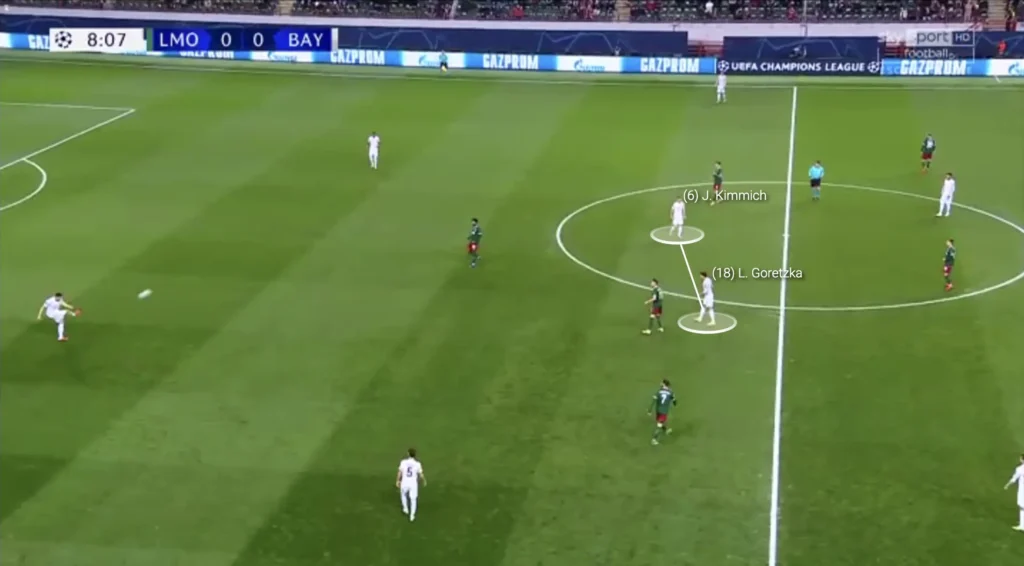
Arsenal under Mikel Arteta (2023):
Arsenal’s tactical evolution under Mikel Arteta, especially in the 2022/2023 season, showcased an innovative use of the double pivot, with Oleksandr Zinchenko inverting from his left-back position to join Thomas Partey in midfield. This setup provided Arsenal with additional control in central areas during build-up phases and defensive transitions. Zinchenko’s technical ability and Partey’s physical presence complemented each other, allowing Arsenal to dominate possession while remaining defensively compact.
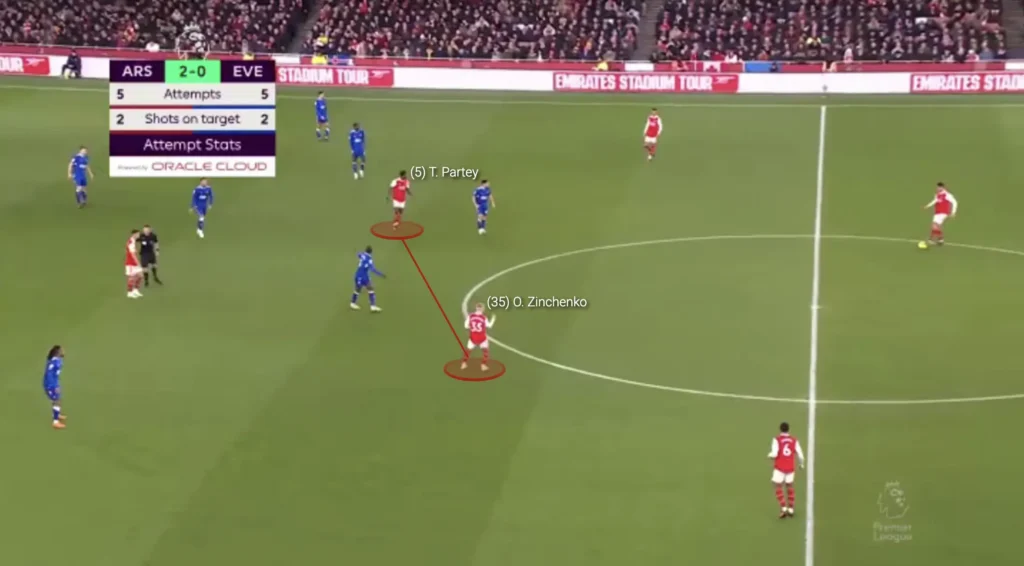
Chelsea under Thomas Tuchel (2021):
N’Golo Kanté and Jorginho showcased a perfect balance of defensive work rate and ball progression en route to winning the UEFA Champions League. Jorginho’s composure, intelligence, and ability to control the tempo from deep made him the orchestrator of Chelsea’s build-up play. Meanwhile, Kanté’s tireless energy and ability to break up opposition attacks provided the perfect support. Kanté’s ability to cover vast areas of the pitch allowed Jorginho more time on the ball, and their understanding of each other’s strengths was crucial to Chelsea’s success in both defensive and offensive phases during their European campaign.
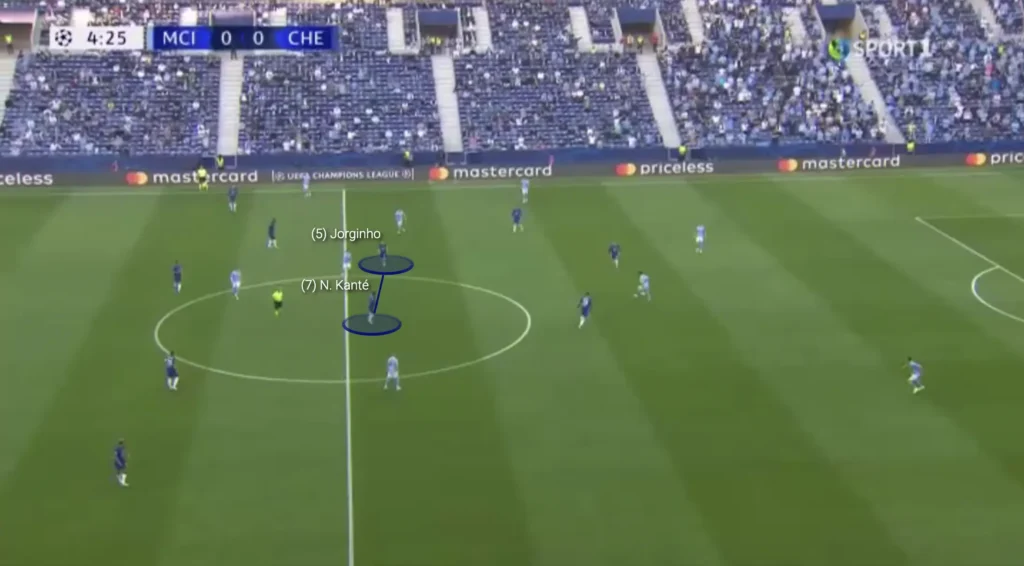
Conclusion
The double pivot remains a cornerstone of modern football tactics. Its blend of defensive solidity, flexibility, and ability to control transitions makes it an invaluable tool for coaches at every level. By understanding its nuances and adapting it to specific game scenarios, teams can unlock new levels of tactical sophistication. Whether you’re a player, coach, or fan, appreciating the intricacies of the double pivot offers deeper insight into the beautiful game. By mastering this setup, teams can create a foundation for both defensive security and offensive fluidity, showcasing the elegance of tactical balance in football.

Hi. Thanks for your useful article. I’ve also translated it to Persian:
https://zoomsportfa.ir/news/13376/
Please continue writing such practical contents ❤